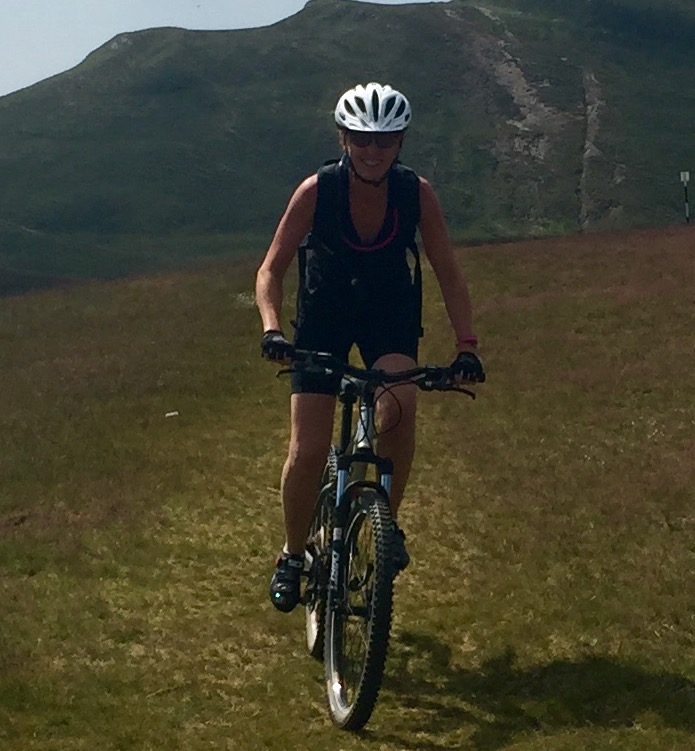Ain’t No Mountain High Enough
For patient Stephanie Sarmiento, being active is a way of life. She inherited her active lifestyle from her parents who taught her to ski, hike, and embrace outdoor sports starting at a very young age. Unfortunately, she also inherited her parents’ genetic propensity for developing arthritis, and when her parents started having their joints replaced , she knew it was only a matter of time before she faced a similar choice.
As she suspected she would, Stephanie started having issues with her knees in her adolescence and when conservative treatments and multiple surgeries over the years no longer offered relief, she knew it was time for her to undergo the final step of replacement surgery. Unwilling to give up being active, Sarmiento knew she needed to do something but was unsure where to turn. Friends and fellow skiers suggested Dr. Richard Berger, whose minimally invasive approach sounded appealing for someone so active.
Stephanie flew to Chicago for the surgery, but her recovery was not textbook. She struggled for the first few months post-operatively. Her physical therapist believed her continued pain stemmed from the joint replacement but, being an athlete and acutely aware of her body, Stephanie said she knew it was not her knee but rather, something else.
Her persistence in working towards finding the source of the pain paid off; Stephanie discovered that she had herniated a disk in her spine before joint replacement surgery which was causing nerve pain down her leg and that prevented her from fully participating in Dr. Berger’s recovery protocol. She received a cortisone injection, worked with an excellent trainer in Bucharest, and her recovery accelerated rapidly
Three months after her herniated disk was discovered, Stephanie climbed the 4500m of San Pedro, a volcano in Guatemala. Emboldened by her success in Guatemala, she set her sights towards a higher goal: Mount Kilimanjaro in Tanzania, the highest point in Africa.
Stephanie knew endurance would be of paramount importance, so she ran as part of her six months of endurance training to prepare for the climb and her knee held up well during the training period, giving her the opportunity to thrive when it came time to summit. And thrive she did; she and her group chose a route that took them five days trekking, and on the morning of the day they intended to summit, Stephanie planned for the hike to take eight hours, but she crushed that time and made it up to the top in only five hours! Just two years after joint replacement surgery she found herself standing at an altitude of 19,341 feet.
Her knee continues to keep up with her; last summer she hiked over 600 kilometers and summited seven peaks between her home in Montana and Romania. She recently climbed the highest mountain in Jordan, Jabal Umm ad Dami, and continues to downhill ski, nordic ski, and go mountain biking. Stephanie says the she is not entirely pain free these days, but the difference is that she no longer experiences intense throbbing and swelling by the end of the day or at the end of a climb. Her ability to continue to do the activities she loves with only minimal discomfort speaks volumes for her recovery and has been a relief because being active is, and will continue to be, a way of life for Sarmiento.

